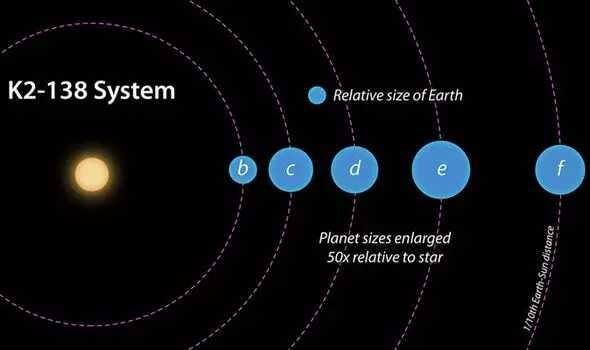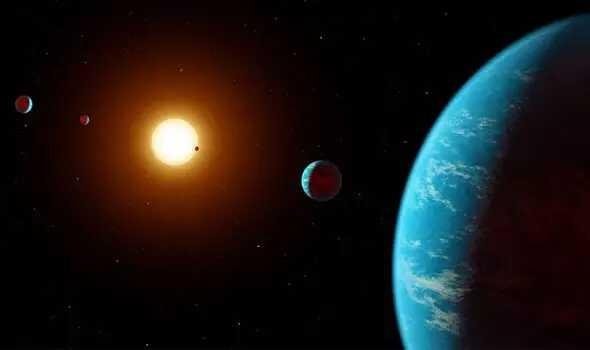
The study was popularised by Brian Cox in Stargazing Live

The planets are extremely close to the parent star
The discovery of the "K2-128 system" was published in a new paper using data from the K2 Mission, using the Kepler space telescope, which has observed over 280,000 stars in three years.
Unfortunately, the telescope suffered a series of hardware failure and could no longer operate the way it was initially intended, so the scientists initiated a crowdsourcing project called Exoplanet Explorers.
The project was developed by Jessie Christiansen from the California Institute of Technology and Ian Crossfield, an astronomer at the University of California, Santa Cruz.
Dr Christiansen said: "People anywhere can log on and learn what real signals from exoplanets look like, and then look through actual data collected from the Kepler telescope to vote on whether or not to classify a given signal as a transit or just noise.
"We have each potential transit signal looked at by a minimum of 10 people, and each needs a minimum of 90 per cent of 'yes' votes to be considered for further characterisation."
Exoplanet Explorers got a big boost in publicity two weeks after it was launched because it was featured on the Australian TV show “Stargazing Live”, co-hosted by Brian Cox.
Within 48 hours of the show’s debut, more than 10,000 people had participated in Exoplanet Explorers and classified over 2million systems, according to a statement by the California Institute of Technology.
On the third night, the scientists announced the detection of the K2-128 system, but at the time they could only identify four planets.
In a statement, researchers said: “The first multiplanet system of exoplanets discovered entirely by crowdsourcing."
K2-138 has at least five “sub-Neptune” planets, meaning they are between the size of Earth and Neptune, according to the study.
The planets all orbit extremely close to the parent star, even closer than mercury.
All five planets orbit around the star in periods shorter than 13 days.
The closeness means the planets have temperatures ranging from 800 to 1800 degrees Fahrenheit (425 to 980 Celsius).
Some of the major findings in the paper are the discovery of a fifth planet and hints of a possible sixth planet in the data.
The star in the centre is slightly smaller and cooler than the Sun.
While the innermost planet is rocky like Earth, the other four are gaseous.

Artist's impression of the alien solar system
Because of the temperatures, it is unlikely the rocky planet is habitable.
All five of the confirmed planets orbit the star in resonance with each other, meaning the length of each planet’s orbit is related to the next planet’s orbit in some way.
This resonance indicates the orbits of the planets are influencing each other and have probably been doing so for a long time, according to researchers.
The paper suggests these planets may have formed further away from the star than they are now and then journeyed inward together in an exceptionally calm manner.Dr Christiansen said in the statement: "Some current theories suggest that planets form by a chaotic scattering of rock and gas and other material in the early stages of the planetary system's life.
“However, these theories are unlikely to result in such a closely packed, orderly system as K2-138.
"What's exciting is that we found this unusual system with the help of the general public."
Assistant professor of planetary science at Caltech, who was not involved in the study, said the resonances indicated a calm migration period, according to researchers.
He said: "Orbital commensurabilities among planets are fundamentally fragile, so the present-day configuration of the K2-138 planets clearly points to a rather gentle and laminar formation environment of these distant worlds.”
This a good news for us but the problem is its very far, it takes years to get there. Time will come vehicle as speed of light will be invented. If there are humans there, they will call us aliens and invaders.
Downvoting a post can decrease pending rewards and make it less visible. Common reasons:
Submit
nice post
Downvoting a post can decrease pending rewards and make it less visible. Common reasons:
Submit